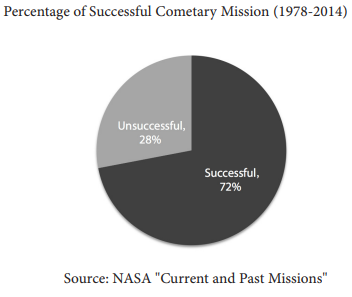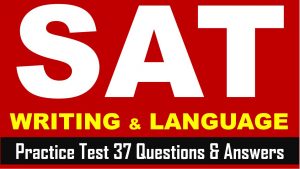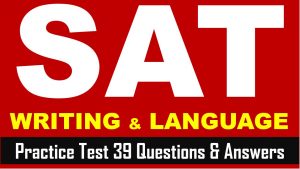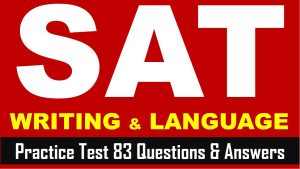Hi SAT Aspirants, welcome to AKVTutorials. As you know SAT (Scholastic Assessment Test) is a standard test, used for taking admission to undergraduate programs of universities or colleges of United States. SAT is developed and published by the College Board, an organization in United States, administered by the Educational Testing Service. Therefore, you need to do practice on SAT Reading Section, SAT Writing and Language Section. In this article, you will get SAT Writing Practice Test 43 with Answer Keys AMBIPi
Instruction:
- In the passage below is accompanied by a number of questions.
- For some questions, you need to think how the passage might be revised to improve the expression of ideas.
- For other questions, you will consider how the passage might be edited to correct errors in sentence structure, usage, or punctuation.
- Some questions will direct you to an underlined portion of a passage.
- Other questions will direct you to a location in a passage or ask you to think about the passage as a whole.
SAT Writing & Language Section Passage
SAT Writing Passage Title: Cometary Missions: Trajectory for success
Scientists have been launching cometary missions since 1978. The first one, a joint mission by the European Space Agency, and the National Aeronautics and Space Administration (NASA), was a “flyby” in which the spacecraft collected data while passing around Comet Giacobini-Zinner. 1 However, the landing of the Rosetta space probe on comet 67P/Churyumov-Gerasemenko in 2014 was different: it marked the first time that a probe landed on a 2 comet and giving scientists an unprecedented opportunity to study the surface of a comet. In order to continue this valuable research, additional missions are needed; thus, it is critical that more funding be allocated for this purpose.
The 2014 Rosetta mission provided a rare opportunity for scientists to test a number of hypotheses regarding the composition of 3 comets; the distribution of organic compounds in our solar system and the origins of life on Earth. Unlike other cometary missions, the Rosetta spacecraft contained a probe, Philae, that was able to land on the surface of a comet.
* Rack your brain and you don’t know why. Follow Wechat: satxbs123, she can help you!
Based on data collected from Philae, scientists were able to conclude that the water vapor on the comet was substantially different than the water vapor on Earth, suggesting that the water on Earth likely did not originate from comets. In addition, scientists have used the data from Philae 4 to investigate why essential amino acids on Earth exist almost exclusively in one of two possible forms. Claudia Alexander, a project scientist for Rosetta at NASA’s Jet Propulsion Laboratory, says that the data collected from 67P will give us a fuller understanding of how substances form to create livable environments.
In addition to improving our understanding of life on Earth, an increase in funds for cometary missions would give scientists an opportunity to learn from 5 they’re failures and improve future missions. During the Rosetta mission, for example, the probe bounced and did not fully insert itself into the comet. Luckily, the landing did succeed, but more opportunities for trials would help scientists perfect their methods and aid in the collection of data from different types of comets in our solar system.

SAT Writing & Language Practice Questions
Question No 1
At this point, the writer wants to add accurate information from the graph. Which choice best accomplishes this goal?
Option A : From 1978 to 2014, the number of successful missions increased from 28 percent to 72 percent
Option B : Before 2014, the majority of attempted cometary missions were considered unsuccessful.
Option C : Between then and 2014, 72 percent of the cometary missions were successful.
Option D : Of the missions attempted since then, 44 percent have been successful.
Answer
Show/Hide Answer
Option C : Between then and 2014, 72 percent of the cometary missions were successful.
Question No 2
Which choice most effectively combines the sentences at the underlined portion?
Option A : NO CHANGE
Option B : comet, but it gave
Option C : comet, yet gives
Option D : comet, giving
Answer
Show/Hide Answer
Option D : comet, giving
Question No 3
Which choice provides the most effectively transition to the information that follows?
Option A : No Change
Option B : comets, the distribution of organic compounds in our solar system,
Option C : comets, the distribution of organic compounds in our solar system;
Option D : comets; the distribution of organic compounds in our solar system,
Answer
Show/Hide Answer
Option B : comets, the distribution of organic compounds in our solar system,
Question No 4
Which choice provides the most effectively transition to the information that follows?
Option A : No Change
Option B : to investigate, why
Option C : to: investigate why
Option D : to investigate why:
Answer
Show/Hide Answer
Option A : No Change
Question No 5
Which choice best maintains the sentence pattern already established in the paragraph?
Option A : No Change
Option B : their
Option C : its
Option D : it’s
Answer
Show/Hide Answer
Option B : their



